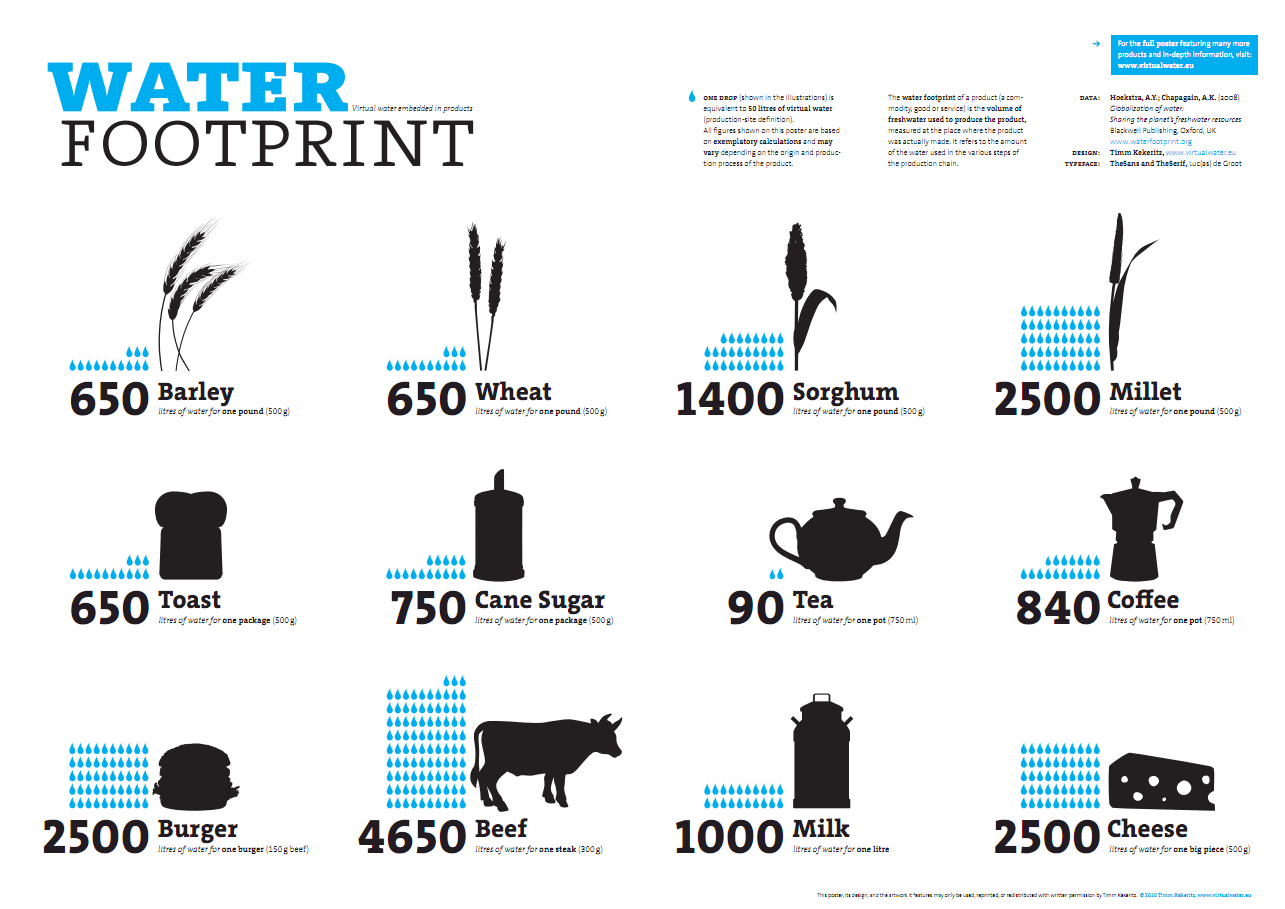Water is one of the most vital natural resources that sustains people’s life. Nutrition guides suggest that a healthy adult needs 8 glasses of water a day. However, what we often do not realize that we use much more water than that for drinking, cooking and cleaning on daily basis. If you look closer, the flow of water is like that of oil and fuel, hidden in the production of every single item.
I recently discovered designer Timm Kekeritiz’s typographic work, “The Virtual Water”. The idea ‘virtual-water content’ was originally proposed by professor Arjen Hoekstra in 2002, when he introduced the concept of water footprint. The water footprint is similar to the ecological footprint measuring human demand on natural resources, specifically on water use. Virtual-water content refers to the amount of freshwater is required to produce a product. The amount of water used in production tends to be much greater than the real-water content of the product, yet it is often overlooked by people.
This concept inspired me therefore I did a poster “Coffe or Tea?” on water footprint for the final project to my History Environment class. According to FAO’s fact sheet, the agricultural sector accounts for more than 70% of global fresh water consumption. Our food choices are thus not diet preferences alone, but environmental acts that have significant impacts on natural resource exploitation. In my project, I took common breakfast products and used graphic information, numerical data, and textual descriptions to illustrate how much water is needed to produce certain items. By visually presenting water footprints of different food products, I hope to raise people’s awareness so that we will be able to better food choices for both our body and the planet.




